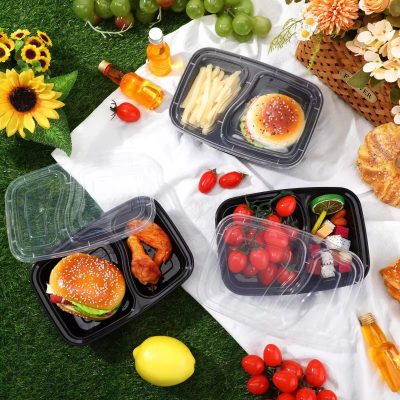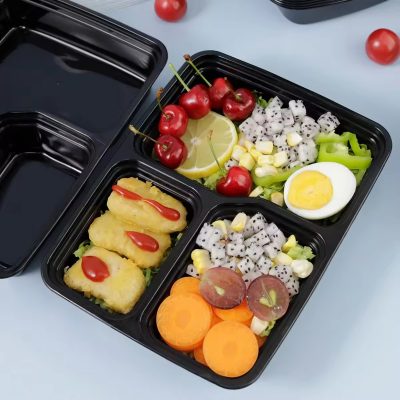Food containers stand as silent sentinels, preserving the essence of food while ensuring its safe journey from production to consumption. In this article, we delve into the pivotal role of food containers, exploring their importance, features, benefits, and the industry’s ongoing commitment to safety and sustainability.
The Crucial Role of Food Containers
Food containers serve as guardians, shielding perishable goods from contamination, spoilage, and damage. They are instrumental in maintaining freshness, extending shelf life, and facilitating convenient storage and transportation of food products.
Essential Features of Food Containers
Material Diversity: Food containers are crafted from various materials including plastic, glass, stainless steel, and eco-friendly alternatives such as bamboo or biodegradable plastics. Each material offers unique benefits in terms of durability, safety, and environmental impact.
Sealing Mechanisms: Airtight seals, snap-on lids, and leak-proof closures help preserve food freshness and prevent spills or leaks, ensuring that contents remain intact during transit and storage.
Temperature Resistance: Many food containers are designed to withstand extreme temperatures, allowing for safe storage in the refrigerator, freezer, or microwave. This versatility enhances convenience and usability for consumers.
Space-saving Design: Stackable, nestable, and collapsible designs optimize storage space, making it easier to organize and store food containers in pantries, refrigerators, and cabinets.
Benefits of Food Containers
Freshness Preservation: Properly sealed food containers protect food from exposure to air, moisture, and contaminants, thereby extending shelf life and reducing food waste.
Convenience and Portability: Food containers offer a convenient solution for meal preparation, storage, and on-the-go consumption. They enable consumers to pack lunches, store leftovers, and transport meals with ease.
Safety and Hygiene: Food-grade materials and leak-proof designs ensure that food containers maintain the safety and hygiene of stored food, minimizing the risk of contamination or spoilage.
Sustainability: Increasingly, food containers are designed with sustainability in mind, using recyclable materials, biodegradable plastics, and reusable designs to minimize environmental impact and promote eco-conscious consumer choices.
Design Considerations
Material Selection: Choosing food-safe materials that are durable, non-toxic, and environmentally friendly. Manufacturers prioritize materials that can be recycled or composted at the end of their lifespan.
Functional Design: Incorporating user-friendly features such as easy-grip handles, clear labeling, and stackable shapes to enhance usability and convenience for consumers.
Environmental Impact: Implementing sustainable manufacturing practices, reducing packaging waste, and optimizing logistics to minimize carbon footprint and promote environmental stewardship.
Safety and Regulatory Compliance
Food containers must adhere to strict safety and regulatory standards to ensure that they are suitable for storing and transporting food. Manufacturers comply with regulations set forth by government agencies such as the FDA, ensuring that containers meet safety requirements and are suitable for food contact.
Conclusion
In conclusion, food containers play a vital role in preserving freshness, convenience, and sustainability in the food industry. By prioritizing functionality, safety, and environmental responsibility in design and manufacturing, the industry can continue to meet the evolving needs of consumers while minimizing its impact on the planet. With a focus on innovation and sustainability, food containers will remain essential tools for storing, transporting, and enjoying food in a safe, convenient, and environmentally friendly manner.







